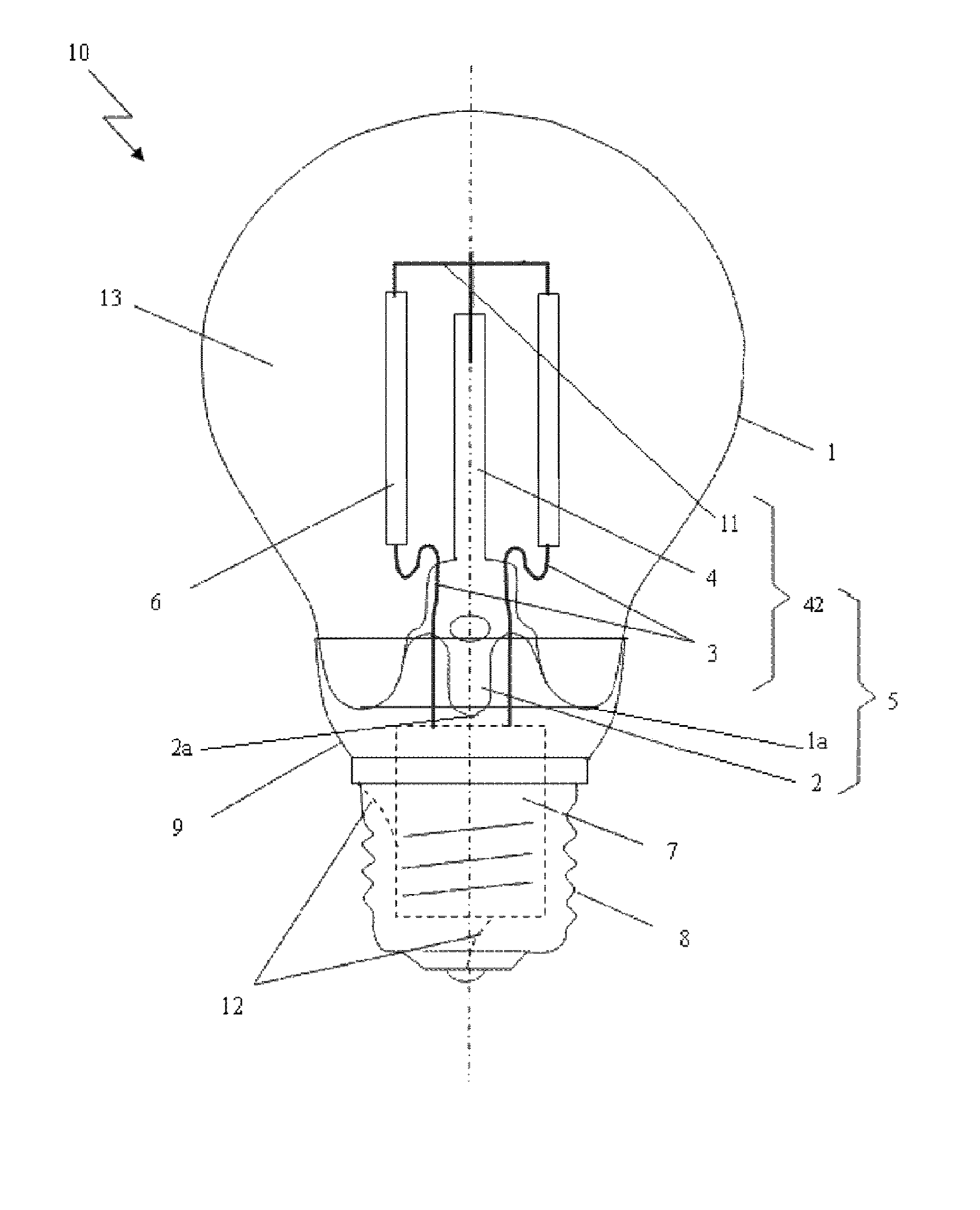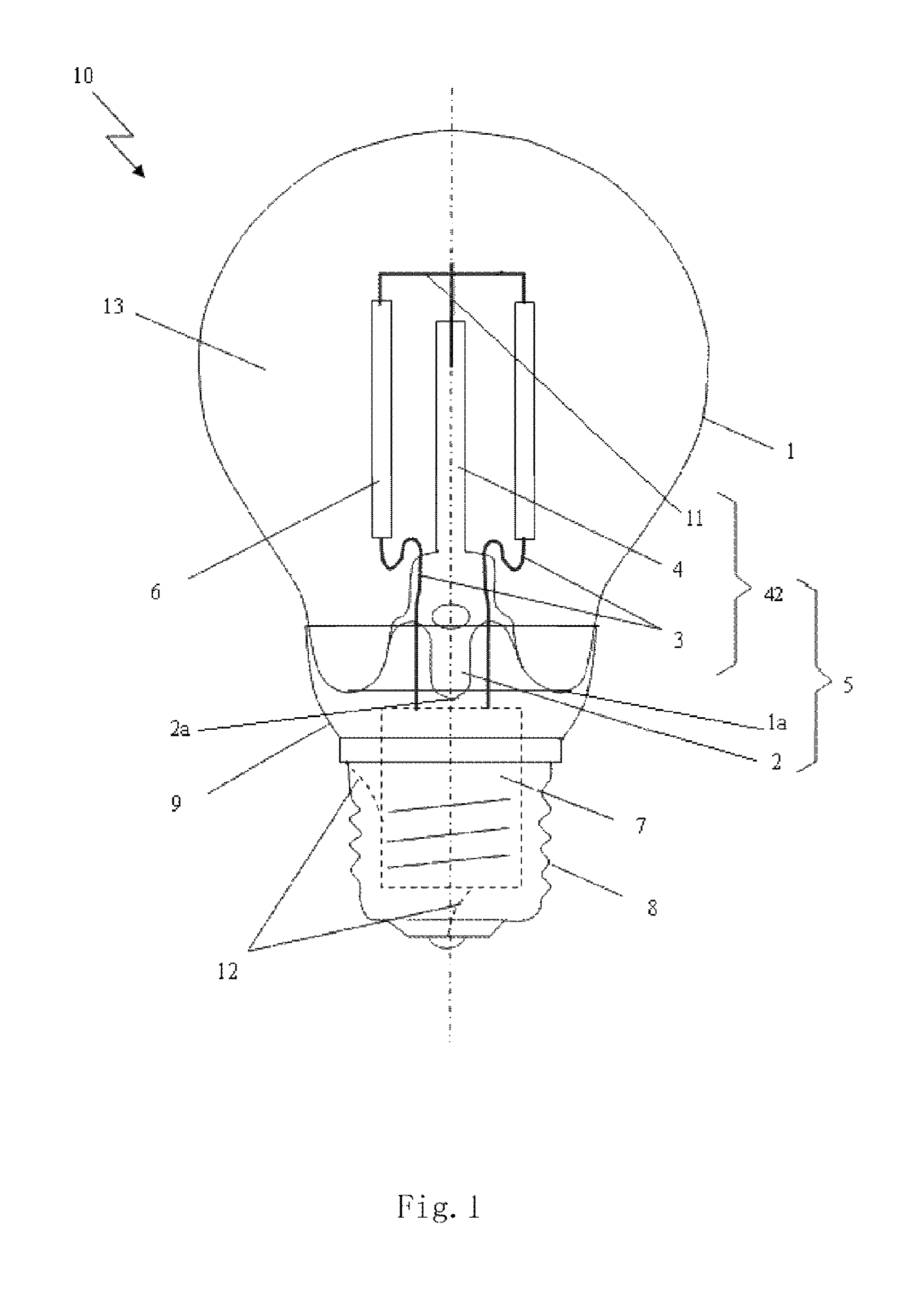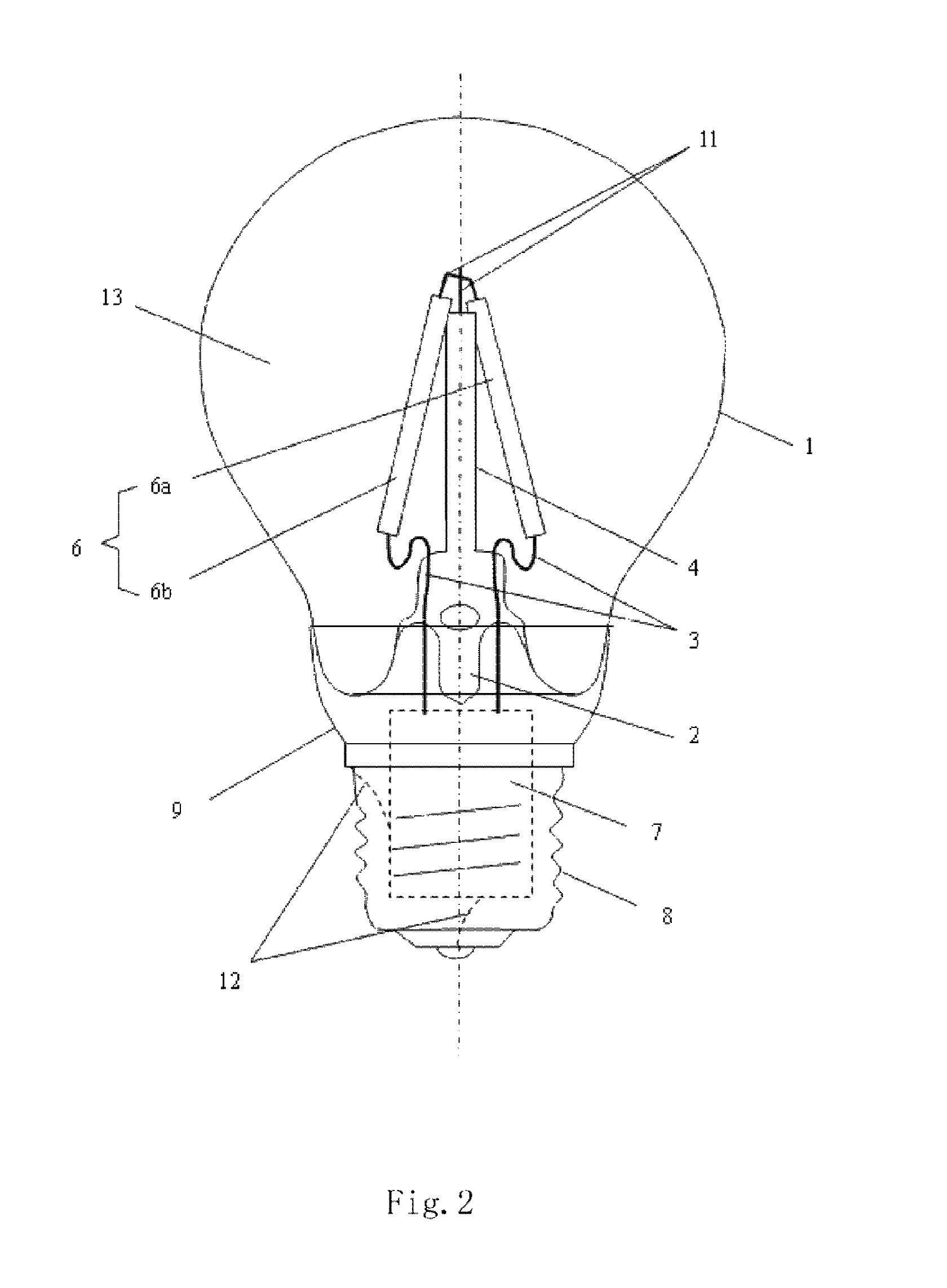LED light bulb and LED light-emitting strip being capable of emitting 4TT light
a technology of led light emitting strips and led light bulbs, which is applied in the direction of point-like light sources, semiconductor devices of light sources, lighting and heating apparatus, etc., can solve the problems of high cost, low efficiency, and difficulty in popularization, and achieve the effect of reducing the glare of led chips, improving the internal quantum efficiency of led chips, and increasing the price of chips
- Summary
- Abstract
- Description
- Claims
- Application Information
AI Technical Summary
Benefits of technology
Problems solved by technology
Method used
Image
Examples
Embodiment Construction
[0134]The technical solution of the present invention will be further explained in detail, by the following embodiments, with reference to FIGS. 1-21. Throughout the specification, the same or similar reference numerals will indicate the same or similar components. The explanation to the implementing of the present invention with reference to the accompanying drawing is intended to interpret the general inventive concept of the present invention, instead of limiting the present invention.
[0135]With referring to FIG. 1, it is a schematic structure view of highly efficient LED light bulb with LED chips emitting 4π light in accordance with one embodiment of the present invention. This LED light bulb includes a light-transmission bulb shell 1 of LED light, a core column 5 with an exhaust tube 2 and a bracket, at least one LED light emitting strip 6 having a LED chip emitting 4π light, a driver 7, an electrical connector 8, a connecting piece 9 connecting the bulb shell 1 to the electric...
PUM
 Login to View More
Login to View More Abstract
Description
Claims
Application Information
 Login to View More
Login to View More - R&D
- Intellectual Property
- Life Sciences
- Materials
- Tech Scout
- Unparalleled Data Quality
- Higher Quality Content
- 60% Fewer Hallucinations
Browse by: Latest US Patents, China's latest patents, Technical Efficacy Thesaurus, Application Domain, Technology Topic, Popular Technical Reports.
© 2025 PatSnap. All rights reserved.Legal|Privacy policy|Modern Slavery Act Transparency Statement|Sitemap|About US| Contact US: help@patsnap.com



